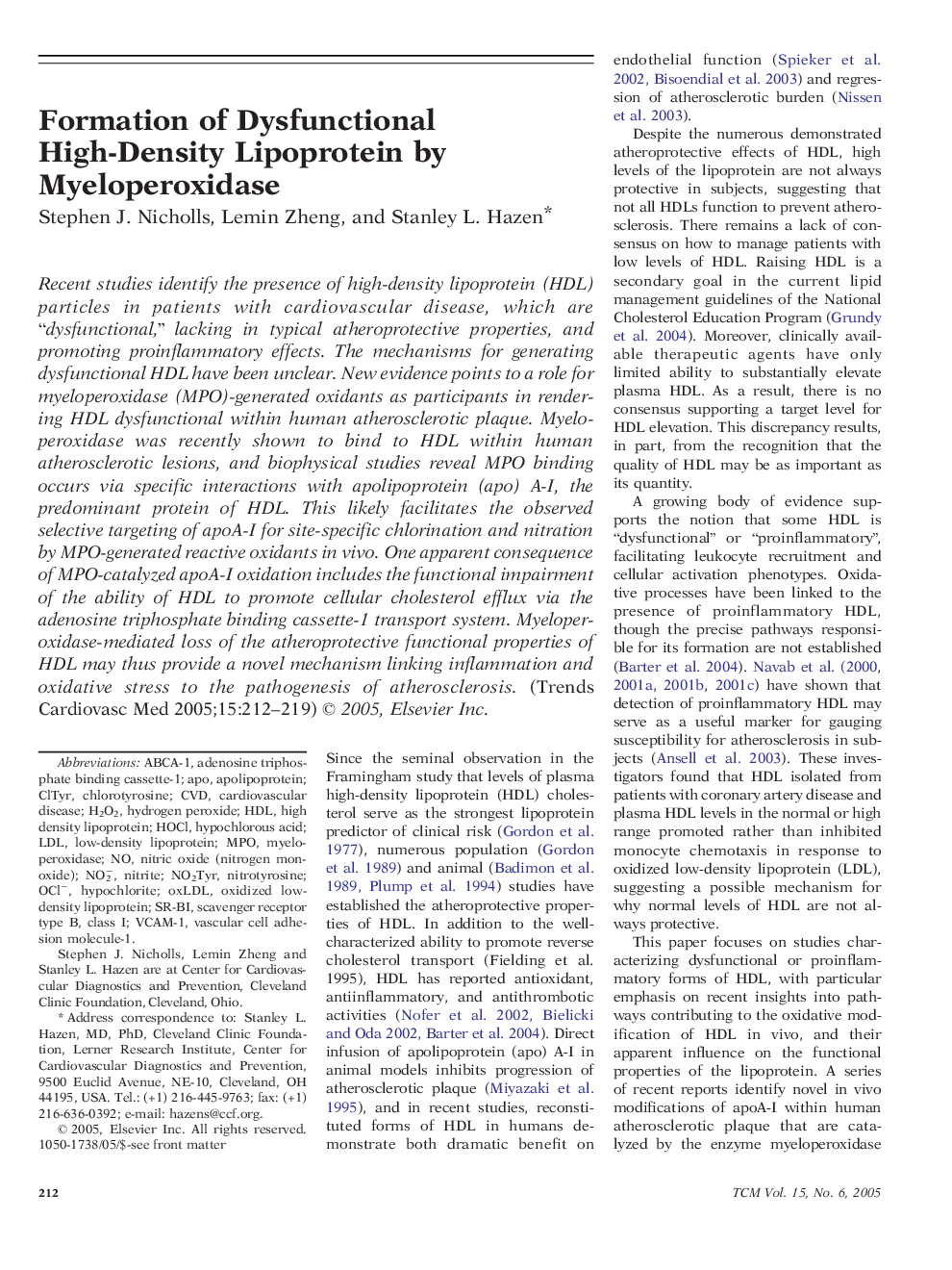| Article ID | Journal | Published Year | Pages | File Type |
|---|---|---|---|---|
| 9186349 | Trends in Cardiovascular Medicine | 2005 | 8 Pages |
Abstract
Recent studies identify the presence of high-density lipoprotein (HDL) particles in patients with cardiovascular disease, which are “dysfunctional,” lacking in typical atheroprotective properties, and promoting proinflammatory effects. The mechanisms for generating dysfunctional HDL have been unclear. New evidence points to a role for myeloperoxidase (MPO)-generated oxidants as participants in rendering HDL dysfunctional within human atherosclerotic plaque. Myeloperoxidase was recently shown to bind to HDL within human atherosclerotic lesions, and biophysical studies reveal MPO binding occurs via specific interactions with apolipoprotein (apo) A-I, the predominant protein of HDL. This likely facilitates the observed selective targeting of apoA-I for site-specific chlorination and nitration by MPO-generated reactive oxidants in vivo. One apparent consequence of MPO-catalyzed apoA-I oxidation includes the functional impairment of the ability of HDL to promote cellular cholesterol efflux via the adenosine triphosphate binding cassette-1 transport system. Myeloperoxidase-mediated loss of the atheroprotective functional properties of HDL may thus provide a novel mechanism linking inflammation and oxidative stress to the pathogenesis of atherosclerosis.
Keywords
HOClOCl−ABCA-1Nitric oxide (nitrogen monoxide)oxLDLSR-BIVCAM-1HDLMPONO2−Hydrogen peroxideapoapolipoproteinhypochlorous acidcardiovascular diseaseCVDhigh density lipoproteinOxidized low-density lipoproteinLow-density lipoproteinLDLvascular cell adhesion molecule-1myeloperoxidasenitrotyrosineNitriteH2O2hypochloriteChlorotyrosine
Related Topics
Health Sciences
Medicine and Dentistry
Cardiology and Cardiovascular Medicine
Authors
Stephen J. Nicholls, Lemin Zheng, Stanley L. Hazen,
